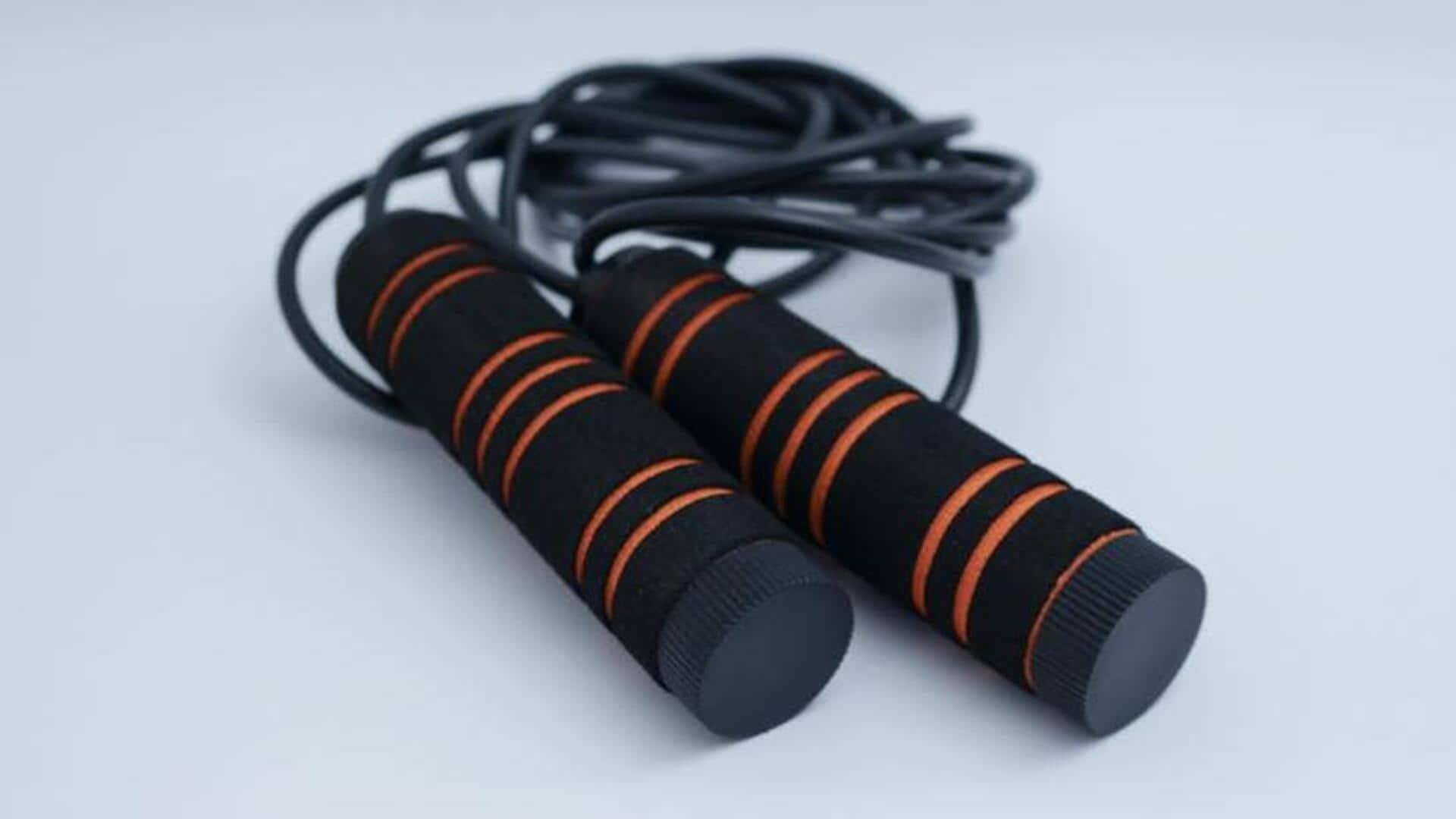
How to make skipping rope a part of your routine
What's the story
Skipping rope is a highly efficient and convenient cardio exercise that can drastically improve your cardiovascular health. It practically needs no special equipment, can be performed practically anywhere, and provides an excellent calorie burn. This article will help beginners learn how to make skipping rope a part of their everyday routine, with a focus on proper form, consistency, and gradual progression.
Gear up
Choosing the right equipment
Choosing the right rope is key for beginners. A light rope with adjustable length is perfect, as it allows you to customize it to your height and skill level. Handles should provide a comfortable grip to avoid slipping during your workout. Quality jump ropes may cost a bit more ($15-$30) but they offer durability and enhanced performance.
Technique
Mastering the basics
Learn the proper form to avoid injury. Stand with your feet hip-width apart. Hold the jump rope handles with your wrists facing up. The rope should be resting on the ground behind your heels. Use your wrists (not your arms) to swing the rope and jump lightly as it approaches your feet. Keep your elbows close to your body and maintain a straight posture throughout.
Progression
Setting realistic goals
Novices are advised to start with one to two minutes of continuous jumping, followed by periods of rest. Over time, as your endurance builds, you can increase the duration. Aim for at least 15 minutes of total skipping time per session, three to four times a week. Keeping a record of your progress encourages consistency and pushes for new challenges.
Spice it up
Incorporating variety
Once you're comfortable with the basics, switch things up to keep it interesting and work different muscles. Try alternating feet, high knees, criss-crosses, and double unders for a fun and challenging twist. Not only do these moves keep things fresh, but they also provide a full-body workout. You'll build endurance and strength as you master each new technique.
Wellness check
Listening to your body
While regularity is crucial in any fitness routine, so is paying attention to your body's needs. If you feel pain or discomfort that goes beyond typical muscle fatigue, it's okay to rest or modify the intensity of your workouts. Always remember to warm up properly before sessions and cool down with stretches afterward to reduce the risk of injury.